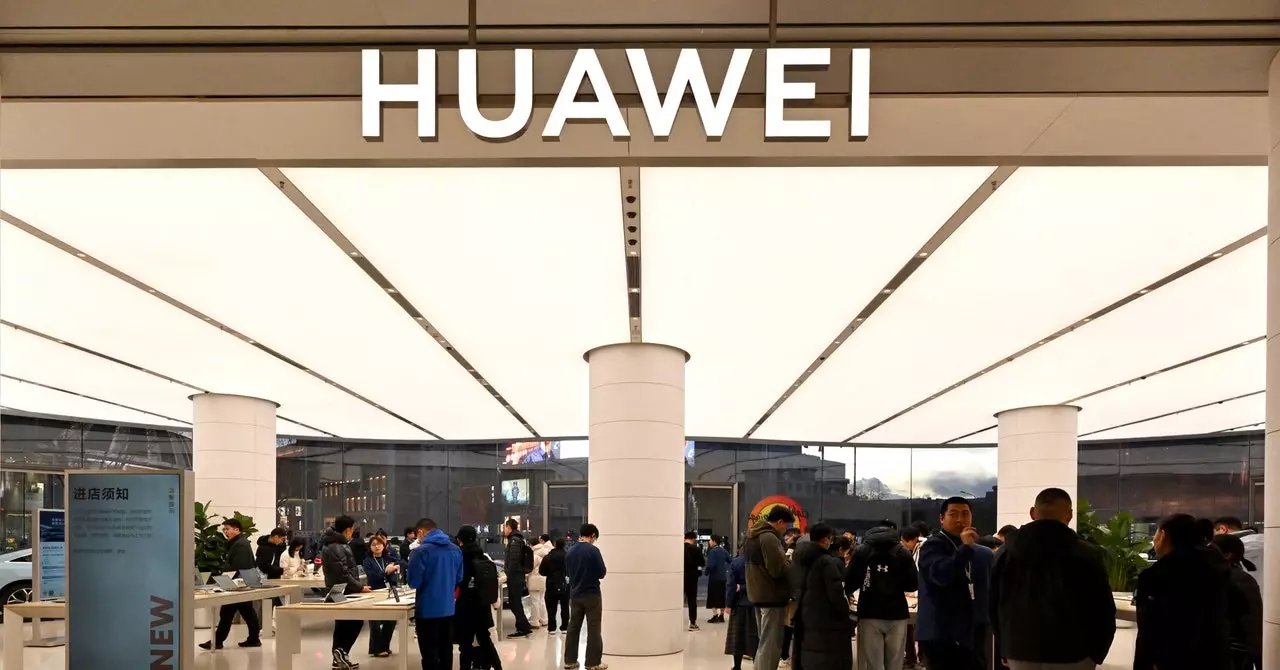For several years, the US government has enacted stringent export controls aimed at stifling China’s technological advancements, particularly in the semiconductor realm. Despite these measures, companies like Huawei demonstrate resilience and ingenuity in navigating the restrictions. The emergence of Huawei’s latest AI training chip, the Ascend, indicates that the Chinese tech sector is not only surviving but is, in some respects, thriving. This development raises critical questions about the effectiveness of US export controls and the potential for unintended consequences.
Reports reveal that Huawei has begun sending samples of its Ascend chip to various firms, including ByteDance, the parent company of TikTok. By leveraging this advanced technology, ByteDance is reportedly training large AI models that could rival those developed using American resources. Baidu has also turned its attention to Huawei’s chips, signaling a significant shift away from reliance on US manufacturers like Nvidia. This trend illustrates a broader move within China to cultivate homegrown solutions as the geopolitical landscape grows increasingly complex.
The roots of these export controls can be traced back to the Trump administration, which, recognizing the burgeoning potential of Chinese AI firms, initiated measures to stifle this growth by placing several companies on an entity list. These restrictions necessitated special licenses for US companies wishing to engage with designated Chinese firms. The Biden administration has since intensified these controls, particularly targeting high-performance GPU chips essential for AI training. However, this tightening of regulations begs the question: are they genuinely constraining China’s technological aspirations, or are they inadvertently catalyzing faster advancements in domestic capabilities?
The revelation of Huawei’s Mate 60 smartphone, showcasing advanced chips produced by Semiconductor Manufacturing International Corporation (SMIC), has sparked significant concern within US circles. This device exemplifies China’s ongoing evolution in semiconductor manufacturing, highlighting advancements that could have been accelerated due to the drive for self-sufficiency spurred by US sanctions. Notably, beyond semiconductors, Chinese enterprises are also making remarkable strides in adjacent sectors like solar energy and electric vehicle manufacturing, areas where US constraints have been less impactful.
As the global competitive landscape shifts, the resilience of China’s tech sector raises pressing implications for US policy. While the initial goal of export limitations may have been to curb Chinese innovation, the persistent emergence of competitive technologies suggests that the US may need to reassess its approach. For authorities in Washington, the narrative is becoming more complicated; restricting access to US technology could end up accelerating China’s own innovation, resulting in a more self-reliant tech ecosystem less vulnerable to external pressures.
The rise of Huawei’s Ascend chip and advancements in other sectors serve as a testament to the resourcefulness of Chinese technology firms in the face of adversity. The ongoing dance between US export controls and Chinese innovation will ultimately shape the future dynamics of global technology leadership.


Leave a Reply
You must be logged in to post a comment.